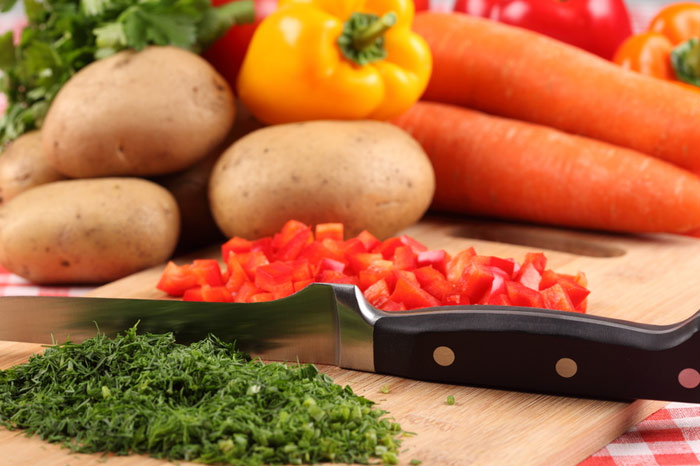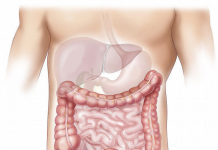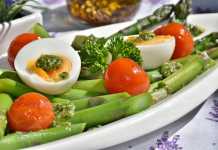If you take care of the figure, finding the right garnish is a very important task. Just think: even boiled chicken breast is no longer a dietary meal if it is located next to the portion of fries on your plate. We would like to share with you what combination of products will not harm the waist. And, of course, we will share the recipes.

Some dieters go to extremes: either lean solely on vegetable side dishes, or even give them up (in the fear of consuming too many calories or carbohydrates). Minuses of both approaches are obvious: a week or two of such nutrition can lead us to failure (think what usually comes after thoughts like “I cannot look at vegetables any more”), provoke uncontrollable cravings, and make the diet unbalanced.
To avoid this, nutritionists recommend alternating three types of side dishes in our diet – vegetables, legumes and cereals. In addition, it is psychologically easier to follow a varied menu: “the complete set” of side dishes will help keep the balance of important nutrients and even accelerate the process of weight loss. Cereal side dishes are the main source of complex carbohydrates and thus energy, as well as B vitamins, so the long-term exclusion of cereals from the diet can be harmful to your health and slow down the metabolic processes in the body. Legumes are important as they are rich in vegetable protein and contain high amounts of fiber, which improves digestion and accelerates cleansing the body.
Some legumes – such as mung beans – help reduce cravings for sweets. Mung beans taste very pleasant and vaguely familiar, resembling mashed potatoes and lobio simultaneously, and still they have nut and herbal notes. They are hearty and similar to baking in texture, so they mute the passion for it. Furthermore, mung beans contain much potassium.
It is, however, worth making a remark: all of the above mentioned is not the reason to make it a rule to have cutlets with buckwheat or pasta with meat for dinner. The right strategy is to mix three types of side dishes on the menu, guided by simple rules:
1. Keep track of the portion sizes and the consumption time
If you reduce weight, it is recommended to eat about 150-300 g of cooked cereals per day. That is, if you had a breakfast serving of oatmeal, you can afford about 150 g of garnish at lunch. It is not recommended eating them for dinner, just like any other carbohydrate meal; in the evening, the body will not have enough time to burn the energy obtained from them and will store them as fat.
With legumes, the situation is different: the daily rate for losing weight is 200-250 g in the finished form. Dieters should better choose green beans, lentils, green peas – they are lower in calories. But chickpeas and soy are better not to get involved. However, experts do not recommend dining with legumes: they contain pretty much starch and protein that is poorly digested and is pointless to the body in the evening.
However, nutritionists allow eating vegetable garnish for lunch and dinner: carbohydrates in them are relatively few, and they are assimilated quite easily. The daily dose is 300-400 g.
2. Cook each type of garnish properly
With cereals and vegetables, everything is pretty simple: they are ideal for losing weight – do not boil cereals too much, and cook vegetables until they are “crumbling”. This will not only save more useful substances in the products, but will also slow down the absorption of carbohydrates from them (which will provide smoother fluctuations in blood sugar levels). Therefore, nutritionists do not recommend losing weight using mashed potatoes as a garnish.
Legumes have other rules. If you have difficulty with digestion, choose mashed potatoes or semi-liquid porridge, these dishes will be absorbed more easily than whole beans. Besides, gassing is lower in this case. This trick will also facilitate the digestion of beans: before cooking, soak them in water for a normal day. This simple trick will neutralize phytic acid in their composition that prevents normal absorption of calcium, and also facilitates the splitting of a special type of fiber legumes called galactomannans. These complex sugars often remain undigested in the small intestine and can seriously degrade the performance of the gastrointestinal tract. In addition, if you cook the beans, remove the water in order to avoid increased gas production.
3. Be aware of the most successful combination of side dishes
We are not talking about the favorite rule of the followers of a separate food intake that carbohydrates and proteins do not belong to the same plate – nutritionists are skeptical about it. In case of healthy digestion, both cereals and vegetable side dishes can be eaten with meat dishes, it is not contrary to the physiology of digestion.
Experts recommend paying attention to another aspect of the compatibility of products: do not mix different types of proteins (animal and plant), as well as do not combine legumes with other products that are difficult to digest: bread, potatoes, nuts. There is a special rule for pasta: pasta (even durum) is well incorporated into the diet of those losing weight as an independent food product 1-2 times a week, but it cannot be used as a garnish.
A real find for losing weight is the mixed side dish, where legumes or cereals are connected with vegetables. Such dishes generally significantly reduce caloric intake and increase the amount of fiber in it.










